($40, Jeanne-Marie de Champs Selection):  Fourchaume, one of top Premier Cru vineyards of Chablis, abuts the Grand Cru vineyards on the right bank of the Serein River. Generally, the wines from Fourchaume are more voluptuous, relatively speaking of course, then the wines from other 1er cru vineyards. … Read more
Fourchaume, one of top Premier Cru vineyards of Chablis, abuts the Grand Cru vineyards on the right bank of the Serein River. Generally, the wines from Fourchaume are more voluptuous, relatively speaking of course, then the wines from other 1er cru vineyards. … Read more
Category Archives: Reviews
Sommariva, Conegliano Valdobbiadene Prosecco Superiore DOCG (Veneto, Italy) Brut NV
($17, Kermit Lynch Wine Merchants): 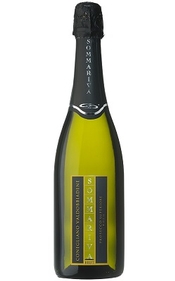 There is Prosecco and then there is the huge step up to Prosecco from the hilly Valdobbiadene – Conegliano region. Of course, it’s a mouthful to pronounce, but it’s worth remembering the distinction when buying Prosecco. … Read more
There is Prosecco and then there is the huge step up to Prosecco from the hilly Valdobbiadene – Conegliano region. Of course, it’s a mouthful to pronounce, but it’s worth remembering the distinction when buying Prosecco. … Read more
Castello di Ama, Toscana IGT (Tuscany, Italy) Pinot Nero “Il Chiuso” 2019
($48):  Castello di Ama is known for spectacular Chianti Classico. But Pinot Nero? Isn’t it too warm in Chianti Classico to grow Pinot Nero? Apparently not, judging from this energetic beauty. The expressive aromatics and savory notes suggest the Pinot Nero must be planted in a cool site. … Read more
Castello di Ama is known for spectacular Chianti Classico. But Pinot Nero? Isn’t it too warm in Chianti Classico to grow Pinot Nero? Apparently not, judging from this energetic beauty. The expressive aromatics and savory notes suggest the Pinot Nero must be planted in a cool site. … Read more
Badia a Coltibuono, Chianti Classico DOCG (Tuscany, Italy) 2020
($22): 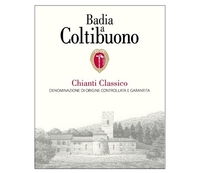 The 2020 vintage in Chianti Classico generally produced rich satisfying wines. Badia a Coltibuono’s certainly fits that mold with dark, but not black, cherry nuances. It has great concentration but more importantly, gorgeous balancing acidity that gives this mid-weight wine enormous energy. … Read more
The 2020 vintage in Chianti Classico generally produced rich satisfying wines. Badia a Coltibuono’s certainly fits that mold with dark, but not black, cherry nuances. It has great concentration but more importantly, gorgeous balancing acidity that gives this mid-weight wine enormous energy. … Read more
Fattoria Le Masse, Chianti Classico DOCG (Tuscany, Italy) 2020
($45):  An electric tension between fruit and firmness energizes this mid-weight wine. Made entirely from Sangiovese, this elegant and sculpted Chianti Classico has a bit of everything, floral aromatics, a steady frame, and a suave texture. Black cherry-like notes add charm to the finish. … Read more
An electric tension between fruit and firmness energizes this mid-weight wine. Made entirely from Sangiovese, this elegant and sculpted Chianti Classico has a bit of everything, floral aromatics, a steady frame, and a suave texture. Black cherry-like notes add charm to the finish. … Read more
Sella & Mosca, Sardegna Alghero Rosso DOC (Sardinia, Italy) “Tanca Farrà” 2019
($32, Taub Family Selections): 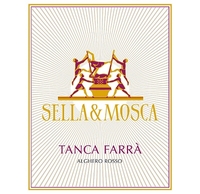 Regulations for the Sardegna Alghero Rosso DOC allow the inclusion of any Sardinian red grapes except for aromatic ones. Sella & Mosca use a seamless, fifty-fifty blend of Cannonau and Cabernet Sauvignon to achieve this beauty. Juicy black fruit enrobed with fine tannins make this suave, muscular wine a pleasure to drink now. … Read more
Regulations for the Sardegna Alghero Rosso DOC allow the inclusion of any Sardinian red grapes except for aromatic ones. Sella & Mosca use a seamless, fifty-fifty blend of Cannonau and Cabernet Sauvignon to achieve this beauty. Juicy black fruit enrobed with fine tannins make this suave, muscular wine a pleasure to drink now. … Read more
Sella & Mosca, Sardegna Alghero DOC (Sardinia, Italy) 2016
($60, Taub Family Selections):  This big but not boisterous wine shows that Sella & Mosca is equally capable with the so-called international grapes as with local ones. Made entirely from Cabernet Sauvignon, the Marchese di Villamarina delivers succulent black fruit, plenty of savory notes all wrapped in firm, not hard, tannins. … Read more
This big but not boisterous wine shows that Sella & Mosca is equally capable with the so-called international grapes as with local ones. Made entirely from Cabernet Sauvignon, the Marchese di Villamarina delivers succulent black fruit, plenty of savory notes all wrapped in firm, not hard, tannins. … Read more
Sella & Mosca, Cannonau di Sardegna DOC Riserva (Sardinia, Italy) 2020
($17, Taub Family Selections):  Sella & Mosca, despite their size — the largest estate on Sardinia — makes excellent wines. This juicy mid-weight Cannonau, the local name for Grenache, delivers crunchy red fruit combined with a hint of spice. Not a fruit bomb by any means, it actually has an engaging hint of bitterness in its long finish. … Read more
Sella & Mosca, despite their size — the largest estate on Sardinia — makes excellent wines. This juicy mid-weight Cannonau, the local name for Grenache, delivers crunchy red fruit combined with a hint of spice. Not a fruit bomb by any means, it actually has an engaging hint of bitterness in its long finish. … Read more
Maison Louis Latour, Santenay (Burgundy, France) 2020
($45, Louis Latour, USA): 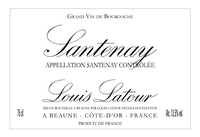 This Santenay is just one example of the great success Latour had with their village wines in 2020. Characteristic of the vintage, it has good depth that augments its charm. Supple, fresh, and long, it is a delight now — and refined for a village Santenay. … Read more
This Santenay is just one example of the great success Latour had with their village wines in 2020. Characteristic of the vintage, it has good depth that augments its charm. Supple, fresh, and long, it is a delight now — and refined for a village Santenay. … Read more
Maison Louis Latour, Mercurey (Burgundy, France) 2020
($50, Louis Latour, USA): 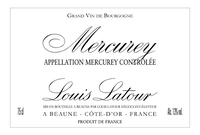 Mercurey, a village just south of the Côte d’Or in the Côte Chalonnaise, is known primarily for red wines. In general, the warmth of 2020 growing season added ripeness to these wines complementing their stoney character. That explains the appeal of this Mercurey from Latour. … Read more
Mercurey, a village just south of the Côte d’Or in the Côte Chalonnaise, is known primarily for red wines. In general, the warmth of 2020 growing season added ripeness to these wines complementing their stoney character. That explains the appeal of this Mercurey from Latour. … Read more
Maison Louis Latour, Marsannay (Burgundy, France) 2020
($45, Louis Latour, USA): 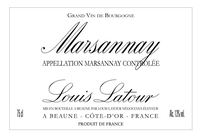 Burgundy lovers have discovered the charms of Marsannay, the northernmost village of the Côtes de Nuits. Prices have risen as a result and are poised to continue their climb because the village is in the process of having some vineyards certified as 1er Cru. … Read more
Burgundy lovers have discovered the charms of Marsannay, the northernmost village of the Côtes de Nuits. Prices have risen as a result and are poised to continue their climb because the village is in the process of having some vineyards certified as 1er Cru. … Read more
Nicolas-Jay, Willamette Valley (Oregon) Chardonnay “Affinités” 2020
($45):  Jean-Nicolas Méo of burgundy’s Domaine Méo-Camuzet, joined forces with Jay Boberg to establish a Willamette Valley winery in 2014. To limit capital outlay, they initially bought grapes, and still do, for some of their wines, like this one. This Chardonnay, a blend from several sites throughout the Willamette, is a smashing success for the 2020 vintage, a vintage for the reds that was mostly destroyed by smoke taint from the devastating wildfires. … Read more
Jean-Nicolas Méo of burgundy’s Domaine Méo-Camuzet, joined forces with Jay Boberg to establish a Willamette Valley winery in 2014. To limit capital outlay, they initially bought grapes, and still do, for some of their wines, like this one. This Chardonnay, a blend from several sites throughout the Willamette, is a smashing success for the 2020 vintage, a vintage for the reds that was mostly destroyed by smoke taint from the devastating wildfires. … Read more
Mandrarossa, Sicilia DOC (Sicily, Italy) Nero d’Avola “Cartagho” 2019
($28):  Nero d’Avola, Sicily’s emblematic grape, produces wines that vary and light and fruity to more substantial and robust. Put this one in the latter category. Earthy notes support dark fruit character. Fine tannins lends support and balance so it doesn’t come across as a “fruity” wine, although there is no lack of black fruitiness. … Read more
Nero d’Avola, Sicily’s emblematic grape, produces wines that vary and light and fruity to more substantial and robust. Put this one in the latter category. Earthy notes support dark fruit character. Fine tannins lends support and balance so it doesn’t come across as a “fruity” wine, although there is no lack of black fruitiness. … Read more
Nicolas-Jay, Willamette Valley (Oregon) Chardonnay “Affinités” 2020
($45):  Jean-Nicolas Méo of burgundy’s Domaine Méo-Camuzet, joined forces with Jay Boberg to establish a Willamette Valley winery in 2014. To limit capital outlay, they initially bought grapes, and still do, for some of their wines, like this one. This Chardonnay, a blend from several sites throughout the Willamette, is a smashing success for the 2020 vintage, a vintage for the reds that was mostly destroyed by smoke taint from the devastating wildfires. … Read more
Jean-Nicolas Méo of burgundy’s Domaine Méo-Camuzet, joined forces with Jay Boberg to establish a Willamette Valley winery in 2014. To limit capital outlay, they initially bought grapes, and still do, for some of their wines, like this one. This Chardonnay, a blend from several sites throughout the Willamette, is a smashing success for the 2020 vintage, a vintage for the reds that was mostly destroyed by smoke taint from the devastating wildfires. … Read more
Tenuta di Capezzana, Rosso di Toscana IGT (Tuscany, Italy) “Ghiaie della Furba” 2015
($60, Dalla Terra Winery Direct):  Ghiaie della Furba, a Super Tuscan blend of Cabernet Sauvignon, Merlot, and Syrah from Capezzana, Carmignano’s top producer, is a robust wine when young. Even at eight years of age, this tightly wound beauty reveals its glories slowly as it sits in the glass. … Read more
Ghiaie della Furba, a Super Tuscan blend of Cabernet Sauvignon, Merlot, and Syrah from Capezzana, Carmignano’s top producer, is a robust wine when young. Even at eight years of age, this tightly wound beauty reveals its glories slowly as it sits in the glass. … Read more
Tenuta di Capezzana, Carmignano DOCG (Tuscany, Italy) “Villa di Capezzana” 2016
($31, Dalla Terra Winery Direct):  Carmignano, Tuscany’s smallest DOCG, is unique because it requires the use of Cabernet, either Sauvignon or Franc, in the blend with Sangiovese. Capezzana makes the benchmark Carmignano. Their 2016, from a spectacular vintage and still widely available retail, is a great introduction to the DOCG. … Read more
Carmignano, Tuscany’s smallest DOCG, is unique because it requires the use of Cabernet, either Sauvignon or Franc, in the blend with Sangiovese. Capezzana makes the benchmark Carmignano. Their 2016, from a spectacular vintage and still widely available retail, is a great introduction to the DOCG. … Read more
Mandrarossa, Sicilia DOC (Sicily, Italy) Nero d’Avola “Cartagho” 2019
($28):  Nero d’Avola, Sicily’s emblematic grape, produces wines that vary and light and fruity to more substantial and robust. Put this one in the latter category. Earthy notes support dark fruit character. Fine tannins lends support and balance so it doesn’t come across as a “fruity” wine, although there is no lack of black fruitiness. … Read more
Nero d’Avola, Sicily’s emblematic grape, produces wines that vary and light and fruity to more substantial and robust. Put this one in the latter category. Earthy notes support dark fruit character. Fine tannins lends support and balance so it doesn’t come across as a “fruity” wine, although there is no lack of black fruitiness. … Read more
Domaine Méo-Camuzet, Corton Grand Cru (Burgundy, France) Corton-Perrières 2020
($375):  Domaine Méo-Camuzet, located in Vosne-Romanée, is one of Burgundy’s top producers. They added a portion of Corton-Perrières, a vineyard that epitomizes the firm austerity of Corton, to their portfolio in 2009. Jean-Nicolas Méo is enthusiastic about the 2020 vintage saying, “[2020] is a great vintage, and you can believe me because I’m selling the 2021.” … Read more
Domaine Méo-Camuzet, located in Vosne-Romanée, is one of Burgundy’s top producers. They added a portion of Corton-Perrières, a vineyard that epitomizes the firm austerity of Corton, to their portfolio in 2009. Jean-Nicolas Méo is enthusiastic about the 2020 vintage saying, “[2020] is a great vintage, and you can believe me because I’m selling the 2021.” … Read more
La Rioja Alta, Rioja Reserva DOC (Spain) “Viña Ardanza” 2016
($42): 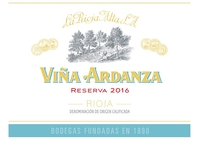 La Rioja Alta is one of Rioja’s top producers. Their Viña Ardanza, an exquisite blend of Tempranillo (80%) and Garnacha, brings both red fruit and savory nuances together. Subtle mature hints add complexity and intrigue. Suavely textured, the emphasis is on elegance and stature, not power. … Read more
La Rioja Alta is one of Rioja’s top producers. Their Viña Ardanza, an exquisite blend of Tempranillo (80%) and Garnacha, brings both red fruit and savory nuances together. Subtle mature hints add complexity and intrigue. Suavely textured, the emphasis is on elegance and stature, not power. … Read more
Herdade de Sao Miguel, Alentejano (Portugal) “Colheita Seleccionada” 2020
($15, Quintessential Wines): 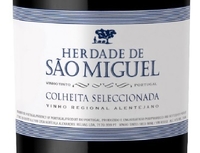 With wines like this one Portugal is poised to supply the world with satisfying wines at good prices. A blend of four red grapes, Alicante Bouschet (50%) Touriga Nacional (30%) Syrah and Cabernet Sauvignon, known for making power packed wines, it is — unsurprisingly — a bold wine. … Read more
With wines like this one Portugal is poised to supply the world with satisfying wines at good prices. A blend of four red grapes, Alicante Bouschet (50%) Touriga Nacional (30%) Syrah and Cabernet Sauvignon, known for making power packed wines, it is — unsurprisingly — a bold wine. … Read more
Vigna 800, Valpolicella Classico DOC (Veneto, Italy) “La Cesolina” 2020
($35):  Light and fresh, Le Cesolina is just what you want with Valpolicella. Don’t misinterpret the light and fresh moniker to mean vapid. Not at all. Though this juicy red wine weighs in at a mere 12.5 percent stated alcohol, it delivers plenty of enjoyment with juicy red cherry-like flavors. … Read more
Light and fresh, Le Cesolina is just what you want with Valpolicella. Don’t misinterpret the light and fresh moniker to mean vapid. Not at all. Though this juicy red wine weighs in at a mere 12.5 percent stated alcohol, it delivers plenty of enjoyment with juicy red cherry-like flavors. … Read more
Caldora, Montepulciano d’Abruzzo (Italy) 2020
($15, Gonzalez Byass USA): 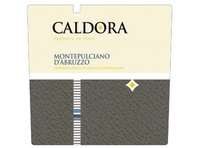 When you run across a wine at this price that’s this enjoyable, it makes you smile. This bright and juicy mid-weight wine has an engaging mix of red fruits accented by a hint of spice. Mild tannins allow immediate enjoyment.… Read more
When you run across a wine at this price that’s this enjoyable, it makes you smile. This bright and juicy mid-weight wine has an engaging mix of red fruits accented by a hint of spice. Mild tannins allow immediate enjoyment.… Read more
Viña Don Melchor, Puente Alto (Maipo Valley, Chile) Cabernet Sauvignon 2020
($151):  Before Seña, Almaviva, Clos Apalta, or Viñedo Chadwick appeared on the scene, there was Don Melchor, standing head and shoulders above every other Chilean wine. Formerly, Don Melchor was the flagship of the Concha y Toro winery. Since 2019, it has become its own entity and winery within Concha y Toro, hence the subtle change in producer to Viña Don Melchor. … Read more
Before Seña, Almaviva, Clos Apalta, or Viñedo Chadwick appeared on the scene, there was Don Melchor, standing head and shoulders above every other Chilean wine. Formerly, Don Melchor was the flagship of the Concha y Toro winery. Since 2019, it has become its own entity and winery within Concha y Toro, hence the subtle change in producer to Viña Don Melchor. … Read more
Beronia, Rioja Crianza (Spain) 2018
($15, Gonzalez Byass USA): 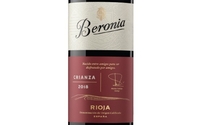 This bright, mid-weight Tempranillo-based wine is a pleasure to drink now. Fresh and lively, it is fruity, but not too fruity, and carries its stated 14.5 percent alcohol seamlessly. Mild tannins provide needed structure without astringency. Its price makes it an everyday kind of wine.… Read more
This bright, mid-weight Tempranillo-based wine is a pleasure to drink now. Fresh and lively, it is fruity, but not too fruity, and carries its stated 14.5 percent alcohol seamlessly. Mild tannins provide needed structure without astringency. Its price makes it an everyday kind of wine.… Read more
Waypoint Wine Company, Russian River Valley (Sonoma County, California) Chardonnay Ritchie Vineyard 2020
($60): 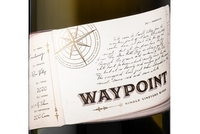 The character of the wine announces itself with an unnecessarily heavy bottle and a wax-covered cork, which makes opening it difficult. A glossy, intense, cream-laden Chardonnay flows from this impressive packaging. Bright acidity amplifies its seductive texture. This well-made wine won’t be for everyone, but those who embrace lush ripe Chardonnay with oomph with love its buttery richness.… Read more
The character of the wine announces itself with an unnecessarily heavy bottle and a wax-covered cork, which makes opening it difficult. A glossy, intense, cream-laden Chardonnay flows from this impressive packaging. Bright acidity amplifies its seductive texture. This well-made wine won’t be for everyone, but those who embrace lush ripe Chardonnay with oomph with love its buttery richness.… Read more
Bodegas Muriel, Rioja Reserva (Spain) “Fincas de la Villa” 2017
($22, Quintessential Wines):  Bodegas Muriel makes a range of wines, all of which are easy to recommend. Frankly, I would buy all three of the current releases reviewed this week, then invite some people over, and give everyone a quick lesson in Rioja. … Read more
Bodegas Muriel makes a range of wines, all of which are easy to recommend. Frankly, I would buy all three of the current releases reviewed this week, then invite some people over, and give everyone a quick lesson in Rioja. … Read more
Bodegas Muriel, Rioja Gran Reserva (Spain) “Viñas Viejas” 2014
($30, Quintessential Wines):  Rounding out this trio of Muriel wines is their stunning old vine Reserva. It is just better, more complex and layered compared to their “regular” Reserva with an even finer texture. It’s the kind of wine that makes you pause after the first sip. … Read more
Rounding out this trio of Muriel wines is their stunning old vine Reserva. It is just better, more complex and layered compared to their “regular” Reserva with an even finer texture. It’s the kind of wine that makes you pause after the first sip. … Read more
Bodegas Muriel, Rioja Crianza (Spain) “Fincas de la Villa” 2019
($16, Quintessential Wines):  The wines of Rioja have been labeled traditionally by the amount of aging they receive prior to release. By law, a Crianza must receive at least one year of barrel age followed by a year of bottle age before release. … Read more
The wines of Rioja have been labeled traditionally by the amount of aging they receive prior to release. By law, a Crianza must receive at least one year of barrel age followed by a year of bottle age before release. … Read more
Jordan Vineyard & Winery, Alexander Valley (Sonoma County, California) Cabernet Sauvignon 2018
($60):  Jordan deserves high praise for never wavering from their course of making full-flavored yet elegant Cabernet Sauvignon. Rob Davis, Jordan’s first and longtime, 1976 to 2019, winemaker, told me he wanted “wines with balance” with low alcohol, not “tannic monsters.” … Read more
Jordan deserves high praise for never wavering from their course of making full-flavored yet elegant Cabernet Sauvignon. Rob Davis, Jordan’s first and longtime, 1976 to 2019, winemaker, told me he wanted “wines with balance” with low alcohol, not “tannic monsters.” … Read more
Masi, Rosso Verona IGT (Veneto, Italy) “CampoFiorin” 2019
($19, SM USA): 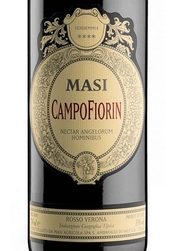 In my opinion, CampoFiorin was Masi’s greatest gift to the world of wine. Basically, Masi created a wine with more oomph and character than Valpolicella, but without the weight and massive profile of Amarone. In short, a mini-Amarone that’s approachable now. … Read more
In my opinion, CampoFiorin was Masi’s greatest gift to the world of wine. Basically, Masi created a wine with more oomph and character than Valpolicella, but without the weight and massive profile of Amarone. In short, a mini-Amarone that’s approachable now. … Read more
Masi, Amarone della Valpolicella Classico DOCG (Veneto, Italy) “Costasera” 2017
($61, SM USA):  Masi’s Costasera Amarone is a big — 15 percent stated alcohol — bold, wintertime wine. Amarone is made using only dried grapes, in contrast to their CampoFiorin, which leads to a higher finished alcohol and more power. There is a hint of sweetness in the finish that balances the wine’s intensity. … Read more
Masi’s Costasera Amarone is a big — 15 percent stated alcohol — bold, wintertime wine. Amarone is made using only dried grapes, in contrast to their CampoFiorin, which leads to a higher finished alcohol and more power. There is a hint of sweetness in the finish that balances the wine’s intensity. … Read more
Hamel Family Wines, Sonoma Valley (Sonoma County, California) “Isthmus” 2018
($90):  This is a stylish and refined Bordeaux blend of roughly two-thirds Cabernet Sauvignon with Merlot, Cabernet Franc, and Petit Verdot filling out the rest. Leading with great aromatics, the emphasis is on elegance rather than power, though there’s plenty of that as well. … Read more
This is a stylish and refined Bordeaux blend of roughly two-thirds Cabernet Sauvignon with Merlot, Cabernet Franc, and Petit Verdot filling out the rest. Leading with great aromatics, the emphasis is on elegance rather than power, though there’s plenty of that as well. … Read more
Bonterra, Mendocino County (California) Cabernet Sauvignon McNab Ranch Vineyard “The McNab” 2020
($60):  Whenever the name of a wine starts with “The,” you know the producer wants to make a statement. An overweight bottle adds to that message. Made with biodynamically grown grapes, this is a big, bold style of Cabernet. Powerful and concentrated, it’s not overdone, just intense with a commanding presence. … Read more
Whenever the name of a wine starts with “The,” you know the producer wants to make a statement. An overweight bottle adds to that message. Made with biodynamically grown grapes, this is a big, bold style of Cabernet. Powerful and concentrated, it’s not overdone, just intense with a commanding presence. … Read more
Louis Latour, Corton-Charlemagne Grand Cru, Burgundy, 2014
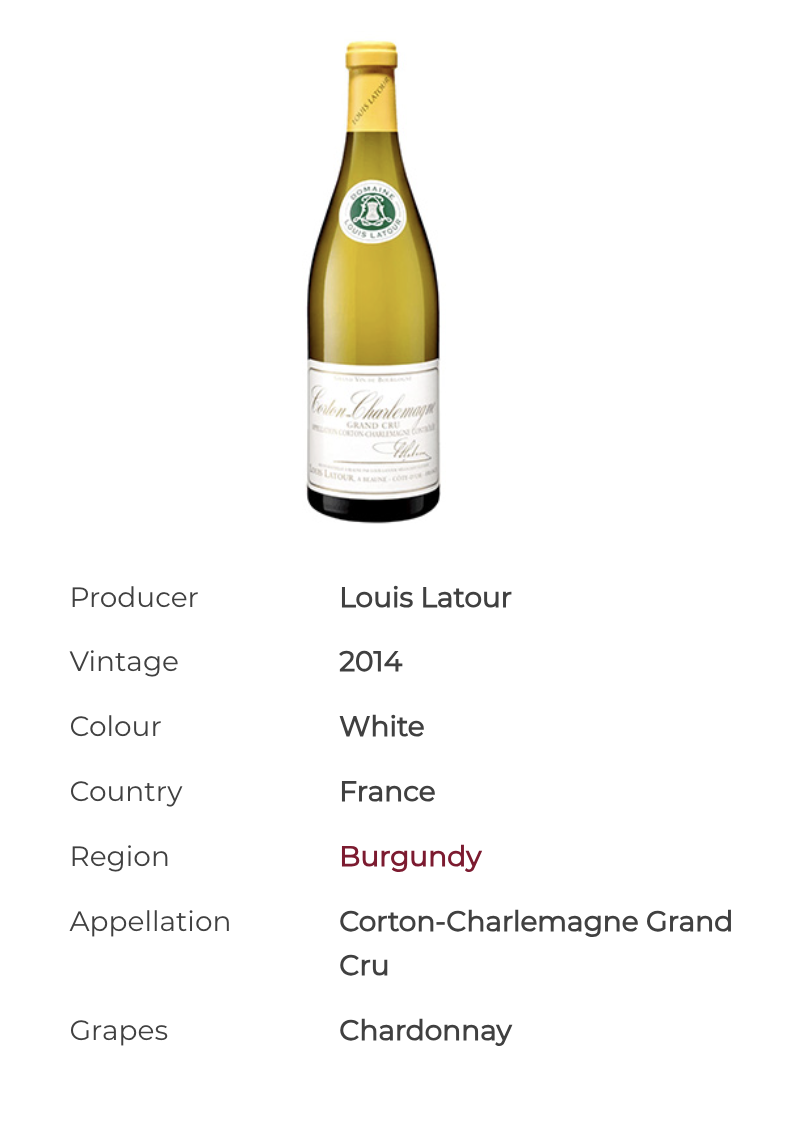 Drinking Window: 2024 – 2034
Drinking Window: 2024 – 2034Charles Krug, Napa Valley (California) Sauvignon Blanc 2021
($17):  This middle-of-the-road style of Sauvignon Blanc strikes the right balance. A mid-weight wine, it has enough bite and varietal character so you know what you’re drinking, but it doesn’t shake you by the lapels as many Sauvignon Blancs might. A pleasing roundness makes it a great choice as a stand-alone aperitif wine, but it has enough acidity to keep it interesting throughout a meal.… Read more
This middle-of-the-road style of Sauvignon Blanc strikes the right balance. A mid-weight wine, it has enough bite and varietal character so you know what you’re drinking, but it doesn’t shake you by the lapels as many Sauvignon Blancs might. A pleasing roundness makes it a great choice as a stand-alone aperitif wine, but it has enough acidity to keep it interesting throughout a meal.… Read more
Cloudy Bay, Marlborough (South Island, New Zealand) Sauvignon Blanc 2022
($33, Moet Hennessy):  Over 35 years ago, in 1985, Cloudy Bay put New Zealand wine on the world’s stage with their riveting Sauvignon Blanc. They, more than anyone, were responsible for the meteoric growth and popularity of Marlborough Sauvignon Blanc. Year in and year out, they continue to produce a stellar example of that wine. … Read more
Over 35 years ago, in 1985, Cloudy Bay put New Zealand wine on the world’s stage with their riveting Sauvignon Blanc. They, more than anyone, were responsible for the meteoric growth and popularity of Marlborough Sauvignon Blanc. Year in and year out, they continue to produce a stellar example of that wine. … Read more
Dog Point Vineyard, Marlborough (South Island, New Zealand) Sauvignon Blanc 2021
($22, Vintus Wines):  Dog Point’s Sauvignon Blanc has been a favorite of mine since Fred Ek, owner of Ex-Cellars, their importer at the time, introduced me to it a couple of decades ago. Dog Point, still family owned, made a delightful one in 2021.… Read more
Dog Point’s Sauvignon Blanc has been a favorite of mine since Fred Ek, owner of Ex-Cellars, their importer at the time, introduced me to it a couple of decades ago. Dog Point, still family owned, made a delightful one in 2021.… Read more
Domaine du Cellier aux Moines, Montagny 1er Cru (Burgundy, France) Les Combes 2020
($45, Misa Imports, Craig Baker Selection): 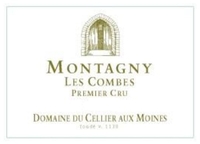 Montagny, a village in the Côte Chalonnaise just south of Burgundy’s famed — and expensive — Côte d’Or has always been an insider’s place to find affordable white Burgundy. With ever increasing prices in Burgundy, it has become and even more popular place for those wines. … Read more
Montagny, a village in the Côte Chalonnaise just south of Burgundy’s famed — and expensive — Côte d’Or has always been an insider’s place to find affordable white Burgundy. With ever increasing prices in Burgundy, it has become and even more popular place for those wines. … Read more
Domaine du Cellier aux Moines, Mercurey (Burgundy, France) “Les Margotons” 2020
($38, Misa Imports, Craig Baker Selection): 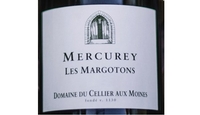 Domaine du Cellier aux Moines produced a stunning array of 2020 whites. With this one, they achieved a perfect combination of creamy character associated with Côte de Beaune whites and the stone-y mineral character of Mercurey whites. … Read more
Domaine du Cellier aux Moines produced a stunning array of 2020 whites. With this one, they achieved a perfect combination of creamy character associated with Côte de Beaune whites and the stone-y mineral character of Mercurey whites. … Read more
Veramonte, Casablanca Valley (Chile) Pinot Noir Reserva 2020
($14, Gonzalez Byass USA): 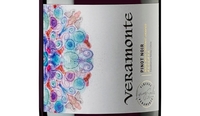 Also made with organically grown grapes, the Veramonte Reserva Pinot Noir is darker and more structured than Alto de Casablanca’s Ritual bottling. It also delivers more savory notes. Taken together, this youthful Pinot Noir calls both for more robust fare and either a year or two in the cellar or an hour in the glass.… Read more
Also made with organically grown grapes, the Veramonte Reserva Pinot Noir is darker and more structured than Alto de Casablanca’s Ritual bottling. It also delivers more savory notes. Taken together, this youthful Pinot Noir calls both for more robust fare and either a year or two in the cellar or an hour in the glass.… Read more
Ritual, Casablanca Valley (Chile) Pinot Noir 2019
($21, Gonzalez Byass USA): 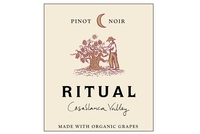 Made with organically grown grapes, this Pinot Noir conveys an enticing combination of red fruits and savory qualities, all touched with a hint of toasty oak. The suave texture of this fresh and juicy mid-weight Pinot Noir makes it ideal for current consumption, with, say, grilled salmon.… Read more
Made with organically grown grapes, this Pinot Noir conveys an enticing combination of red fruits and savory qualities, all touched with a hint of toasty oak. The suave texture of this fresh and juicy mid-weight Pinot Noir makes it ideal for current consumption, with, say, grilled salmon.… Read more
Alta Vista, Valle de Uco (Mendoza, Argentina) Malbec Single Vineyard, Albaneve 2018
($51, Kobrand Wine & Spirits):  Like the unnecessarily heavy bottle, this stunning single-vineyard Malbec is a weighty bold wine but with remarkable balance for its size. This robust wine carries its 15 percent stated alcohol well. Suavely textured, it still has enough structure to counter the deep plum-like fruit and slightly alluring tarry elements. … Read more
Like the unnecessarily heavy bottle, this stunning single-vineyard Malbec is a weighty bold wine but with remarkable balance for its size. This robust wine carries its 15 percent stated alcohol well. Suavely textured, it still has enough structure to counter the deep plum-like fruit and slightly alluring tarry elements. … Read more
Jordan Vineyard & Winery, Alexander Valley (Sonoma County, California) Cabernet Sauvignon 2018
($60):  Jordan deserves high praise for never wavering from their course of making full-flavored yet elegant Cabernet Sauvignon. Rob Davis, Jordan’s first and longtime, 1976 to 2019, winemaker, told me he wanted “wines with balance” with low alcohol, not “tannic monsters.” … Read more
Jordan deserves high praise for never wavering from their course of making full-flavored yet elegant Cabernet Sauvignon. Rob Davis, Jordan’s first and longtime, 1976 to 2019, winemaker, told me he wanted “wines with balance” with low alcohol, not “tannic monsters.” … Read more
Masi, Valpolicella Classico DOC (Veneto, Italy) “Bonacosta” 2020
($17, SM USA):  Masi, one of the leading Valpolicella/Amarone producers, makes a wonderful range of wines. Made from the usual Valpolicella grapes, Corvina, Rolindella, and Molinara, Masi’s mid-weight Bonacosta, their “regular” (though there’s nothing regular about it) Valpolicella Classico delivers juicy bright cherry flavors. … Read more
Masi, one of the leading Valpolicella/Amarone producers, makes a wonderful range of wines. Made from the usual Valpolicella grapes, Corvina, Rolindella, and Molinara, Masi’s mid-weight Bonacosta, their “regular” (though there’s nothing regular about it) Valpolicella Classico delivers juicy bright cherry flavors. … Read more
Masi, Rosso Verona IGT (Veneto, Italy) “CampoFiorin” 2019
($19, SM USA):  In my opinion, CampoFiorin was Masi’s greatest gift to the world of wine. Basically, Masi created a wine with more oomph and character than Valpolicella, but without the weight and massive profile of Amarone. In short, a mini-Amarone that’s approachable now. … Read more
In my opinion, CampoFiorin was Masi’s greatest gift to the world of wine. Basically, Masi created a wine with more oomph and character than Valpolicella, but without the weight and massive profile of Amarone. In short, a mini-Amarone that’s approachable now. … Read more
Masi, Amarone della Valpolicella Classico DOCG (Veneto, Italy) “Costasera” 2017
($61, SM USA):  Masi’s Costasera Amarone is a big — 15 percent stated alcohol—bold, wintertime wine. Amarone is made using only dried grapes, in contrast to their CampoFiorin, which leads to a higher finished alcohol and more power. There is a hint of sweetness in the finish that balances the wine’s intensity. … Read more
Masi’s Costasera Amarone is a big — 15 percent stated alcohol—bold, wintertime wine. Amarone is made using only dried grapes, in contrast to their CampoFiorin, which leads to a higher finished alcohol and more power. There is a hint of sweetness in the finish that balances the wine’s intensity. … Read more
Batasiolo, Barolo DOCG (Piedmont, Italy) Riserva 2012
($82, Palm Bay International):  In addition to making very fine single vineyard Baroli, Batasiolo makes this Riserva from grapes grown throughout the delimited Barolo region. Indeed, some of the grapes that could have gone into their single vineyard bottlings are used in the Riserva to maintain consistency and quality. … Read more
In addition to making very fine single vineyard Baroli, Batasiolo makes this Riserva from grapes grown throughout the delimited Barolo region. Indeed, some of the grapes that could have gone into their single vineyard bottlings are used in the Riserva to maintain consistency and quality. … Read more
Duca di Salaparuta, Terre Siciliane IGT (Sicily, Italy) Nerello Mascalese “Lavico” 2018
($17, Disaronno International):  Consumers unfamiliar with Nerello Mascalese, the signature grape of Sicily’s Mount Etna, should grab this bottle. Lava-like mineral notes complement the sour cherry like ones in this mid-weight red. A long an explosive finish reminds you this is a wine to sip and savor. … Read more
Consumers unfamiliar with Nerello Mascalese, the signature grape of Sicily’s Mount Etna, should grab this bottle. Lava-like mineral notes complement the sour cherry like ones in this mid-weight red. A long an explosive finish reminds you this is a wine to sip and savor. … Read more
Mandrarossa, Sicilia DOC (Sicily, Italy) Nero d’Avola 2021
($12, Palm Bay International):  Nero d’Avola, Sicily’s most main red grape, is worth getting to know because it can deliver an appealing combination of fruitiness mixed with non-fruit elements. Take this one, for example. Its initial delivery is heavy on the fresh, black cherry-like notes. … Read more
Nero d’Avola, Sicily’s most main red grape, is worth getting to know because it can deliver an appealing combination of fruitiness mixed with non-fruit elements. Take this one, for example. Its initial delivery is heavy on the fresh, black cherry-like notes. … Read more
Duca di Salaparuta, Terre Siciliane IGT (Sicily, Italy) Nerello Mascalese “Lavico” 2018
($17, Disaronno International):  Consumers unfamiliar with Nerello Mascalese, the signature grape of Sicily’s Mount Etna, should grab this bottle. Lava-like mineral notes complement the sour cherry like ones in this mid-weight red. A long an explosive finish reminds you this is a wine to sip and savor. … Read more
Consumers unfamiliar with Nerello Mascalese, the signature grape of Sicily’s Mount Etna, should grab this bottle. Lava-like mineral notes complement the sour cherry like ones in this mid-weight red. A long an explosive finish reminds you this is a wine to sip and savor. … Read more
